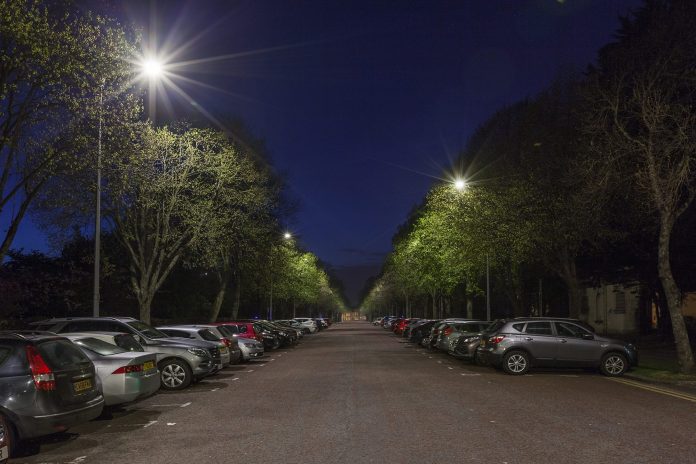The city of Cardiff in the UK has started a tender process to procure a lighting supplier for the £4.5 million upgrade of 23,750 residential streetlights in the city with LED bulbs and smart controls.
The move follows completion of a residential pilot in the suburb of Radyr, four miles from the Welsh capital, involving the conversion of 1,250 streetlights to LEDs. It also follows the upgrade of 18,000 streetlights to smart LEDs across the city’s so-called ‘strategic’ road network.
The strategic upgrade, worth around £4.45 million at the time, was carried out by Netherlands-based lighting firm Signify. It has saved the city £462,000 over five years, according to council documents, with £122,000 coming during 2019/20.
The cost of the residential streetlight upgrade has been put at £4.578 million, which will be secured against an interest-free loan from the UK government, under its Salix scheme for energy reduction in cities.
It is expected to save the council £424,000 in energy costs and 836 tonnes of CO2 per annum. The project is assumed to pay back initial investment over a 15 year period. The council has a stated target to reduce carbon emissions by 26 per cent by 2020.
The introduction of connectivity and central management to the city’s residential streetlighting, at an additional cost (it paid around £800,000 last time out), will reduce ongoing maintenance and planned lifecycle renewal costs of existing lanterns.
Matt Wakelam, head of infrastructure and operations at the city council, said: “We are just about to pull together the contract documents to go out to tender, and then we will deliver the residential.
“But the residential piece is a whole different game, compared with the strategic routes. Residents will be more engaged in that lighting change, and smart lighting will really come into its own. We will be even stronger in the residential areas.”
At the same time, Wakelam acknowledged the energy savings will less in residential streets because lower-wattage luminaires will be involved. Completion of the city’s residential lighting will see all of its streetlights upgraded to connected LED fixtures, except for a small number of ornamental lights.
The city expects to go with 2G connectivity, again, for the residential lighting infrastructure, simply because the experience has been good with the strategic lighting infrastructure already.
Wakelam reflected: “We get enough data through the 2G to be honest, and we get it at a cheaper price. We have paid [for the airtime] upfront, as part of the package, so there aren’t any data charges. We will probably continue like that because we don’t want to be paying for things we don’t use.”
The city is considering additional smart sensors and applications to hang off its lighting infrastructure, but is hesitant to commit to investing in new technology until it thinks the price is correct and the value is clear. “We have the network in place. The lighting is the skeleton; you can hang what you want off it,” said Wakelam.

